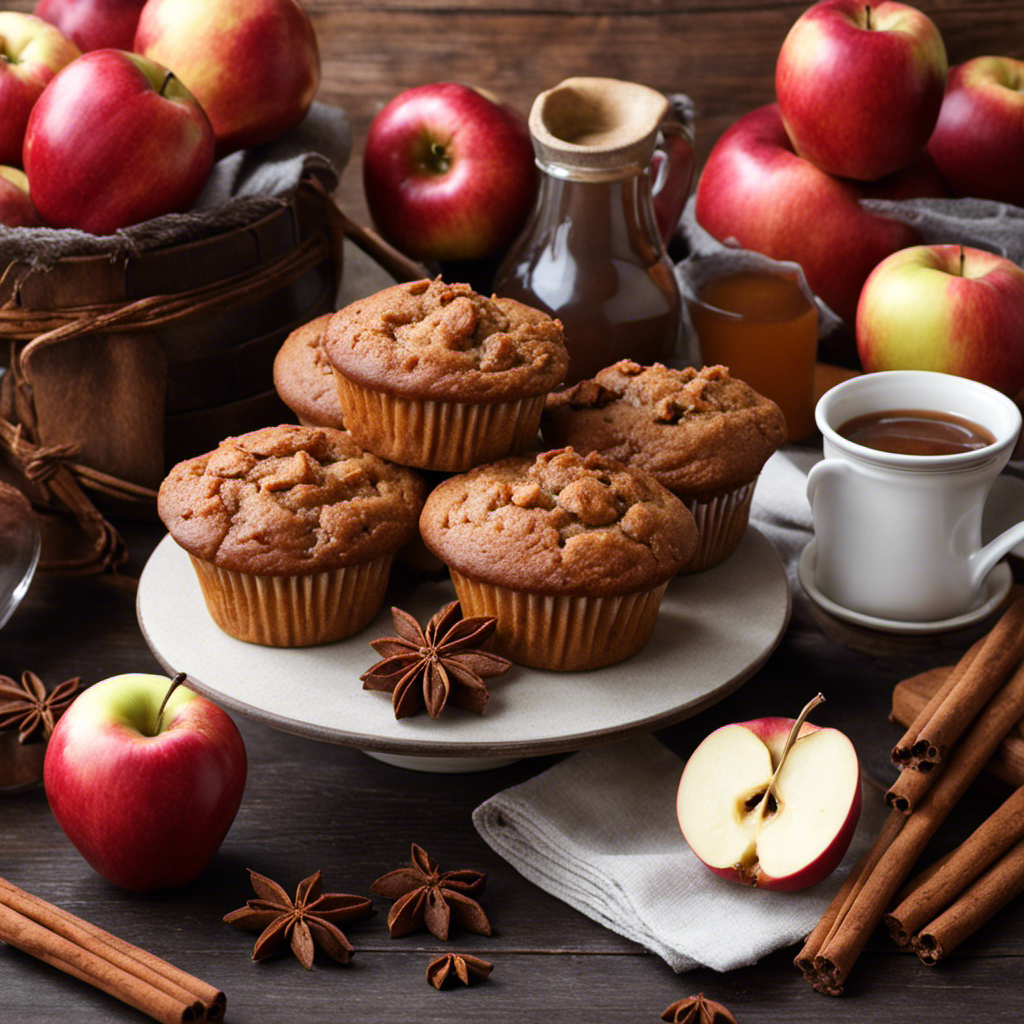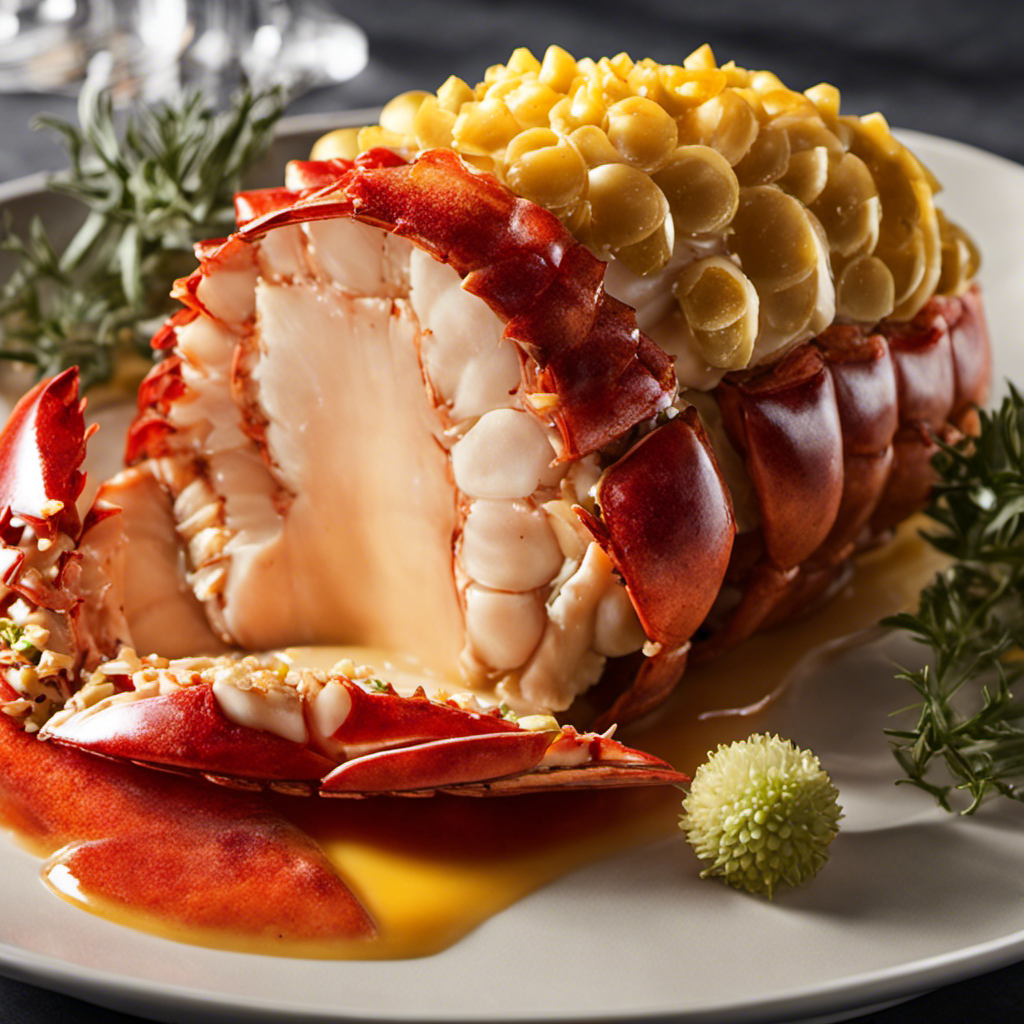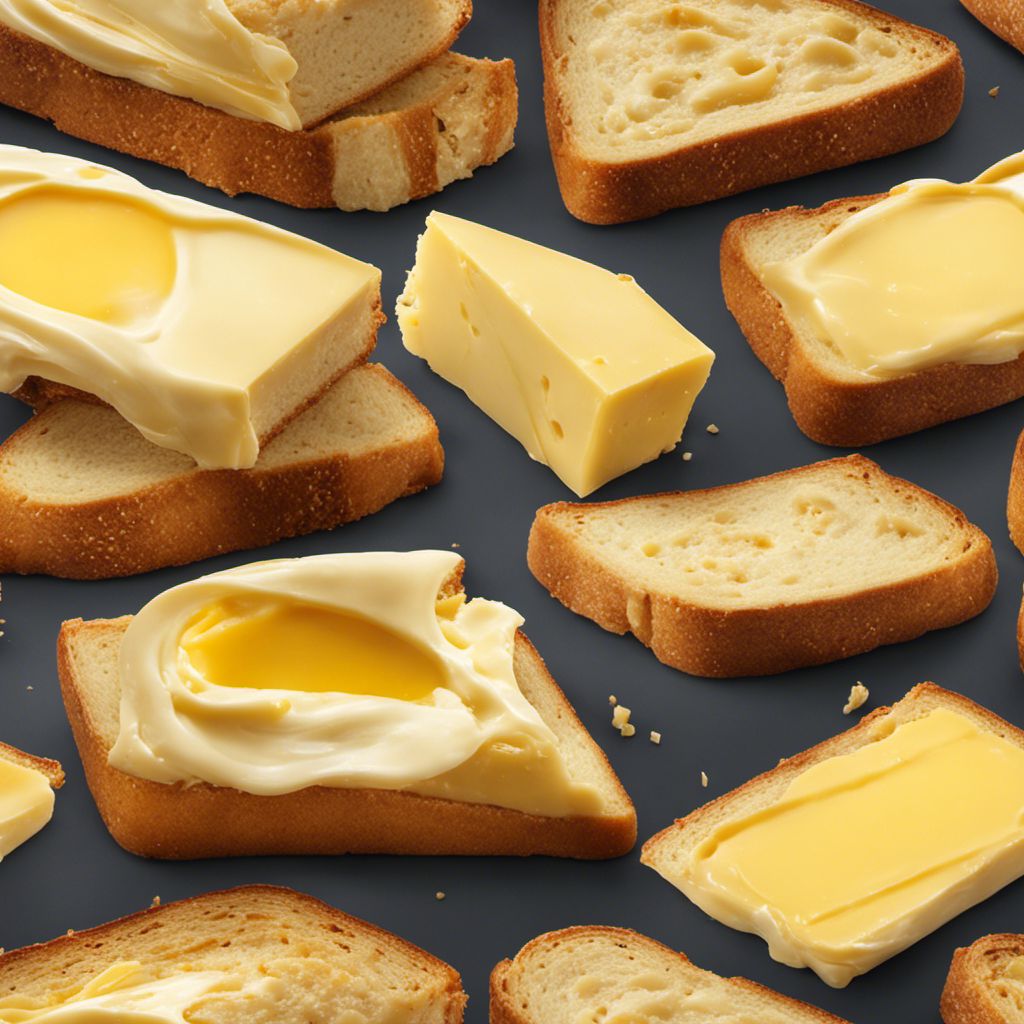As a self-proclaimed cookie butter connoisseur, I am thrilled to provide you with some tasty ideas for using this delightful spread.
Did you know that cookie butter sales have skyrocketed by 300% in the past year alone? It’s no wonder, considering its addictive sweet and spicy flavor.
Whether you’re craving a decadent dessert, a creative baking venture, or a unique snack, I’ve got you covered with a variety of delectable recipes that will satisfy your cookie butter cravings.
Get ready to indulge in a world of cookie butter delights!
Key Takeaways
- Cookie butter can be used in a variety of desserts such as milkshakes, stuffed brownies, ice cream sandwiches, frosting, and cheesecake.
- Baking with cookie butter opens up possibilities for pancakes, cookies, brownies, and cakes.
- Cookie butter spreads can be used to create delicious treats like ice cream sandwiches, frosting, milkshakes, smoothies, and popcorn.
- For easy snacks, cookie butter can be used to make smoothies, popcorn, pretzel bites, fruit dip, and granola bars.
Delicious Cookie Butter Dessert Ideas
If you’re looking for some delicious dessert ideas using cookie butter, you’ve come to the right place!
One of my favorite ways to indulge in the rich and creamy goodness of cookie butter is by making a decadent cookie butter milkshake. Simply blend together a generous scoop of cookie butter, some vanilla ice cream, and a splash of milk for a treat that will satisfy your sweet tooth and leave you craving more.
Another irresistible option is to make cookie butter stuffed brownies. Just imagine biting into a warm and gooey brownie, only to discover a luscious cookie butter center. The combination of fudgy chocolate and the irresistible taste of cookie butter is simply divine.
Now that I’ve shared these mouthwatering dessert ideas, let’s dive into some creative ways to use cookie butter in baking.
Creative Ways to Use Cookie Butter in Baking
Explore new and exciting baking recipes by incorporating cookie butter into your favorite desserts. Cookie butter, with its rich and creamy texture, adds a delicious and unique flavor to any dessert.
Here are some creative ways to use cookie butter in your baking:
- Make fluffy and indulgent cookie butter pancakes for a decadent breakfast treat.
- Create a luscious cookie butter cheesecake with a buttery cookie crust and a velvety smooth filling.
- Whip up a batch of soft and chewy cookie butter cookies, perfect for sharing with friends and family.
- Add a dollop of cookie butter to your brownie batter for a gooey and irresistible twist on a classic dessert.
- Mix cookie butter into your favorite cake batter for a moist and flavorful cake that will leave everyone wanting more.
With these delicious recipes, you can take your baking skills to the next level and impress your loved ones with the incredible flavors of cookie butter. So, let’s get started and dive into the world of irresistible cookie butter spread recipes.
Irresistible Cookie Butter Spread Recipes
If you’re a fan of the irresistible taste of cookie butter, you’re in for a treat! In this discussion, we’ll explore the world of unique cookie butter desserts and easy cookie butter snacks.
Get ready to indulge in delicious treats that will satisfy your sweet tooth and leave you craving for more. From decadent cookie butter cheesecake to simple yet addictive cookie butter pretzel bites, these recipes are sure to become your new favorites.
Unique Cookie Butter Desserts
You can try making cookie butter ice cream sandwiches for a unique and delicious dessert. These treats are a perfect blend of creamy ice cream and the rich, sweet flavor of cookie butter. To make them, simply sandwich a scoop of your favorite ice cream between two cookies made with cookie butter. The result is a heavenly combination of textures and flavors that will leave you craving for more.
Another delectable option is to use cookie butter frosting to top off cupcakes or spread it between layers of cake for an indulgent treat.
And if you’re in the mood for a refreshing drink, why not try a cookie butter milkshake? Blend cookie butter with milk, ice cream, and a dash of cinnamon for a creamy and satisfying beverage.
With these unique cookie butter desserts, you’ll never look at this spread the same way again.
Easy Cookie Butter Snacks
Don’t miss out on these simple and delicious snacks that incorporate the irresistible flavor of cookie butter.
One of my favorite ways to enjoy this delectable spread is by making cookie butter smoothies. Just blend together a ripe banana, a scoop of cookie butter, a splash of milk, and a handful of ice for a creamy and indulgent treat. The cookie butter adds a rich and nutty flavor that pairs perfectly with the sweetness of the banana.
Another snack that I can’t resist is cookie butter popcorn. Simply drizzle melted cookie butter over freshly popped popcorn and toss to coat. The warm, gooey cookie butter adds a sweet and savory twist to this classic snack.
Trust me, once you try these cookie butter snacks, you’ll be hooked!
Mouthwatering Cookie Butter Treats
I absolutely love cookie butter, and I’m always on the lookout for new and creative ways to use it in my recipes.
In this discussion, we’ll dive into the world of cookie butter and explore some mouthwatering treats that are sure to satisfy your sweet tooth.
From creative cookie butter recipes to irresistible combinations and unique desserts, get ready to elevate your cookie butter game to a whole new level of deliciousness.
Creative Cookie Butter Recipes
There’s no shortage of delicious and unique recipes you can make using cookie butter. Whether you’re looking for something savory or a cocktail with a twist, cookie butter can add a whole new dimension to your dishes and drinks.
Here are some creative ways to incorporate cookie butter into your recipes:
-
Cookie Butter Chicken Wings: Coat your wings with a mixture of cookie butter, soy sauce, and spices for a sweet and savory twist.
-
Cookie Butter Pasta: Toss cooked pasta with a sauce made from cookie butter, cream, and garlic for a decadent and creamy dish.
-
Cookie Butter Martini: Shake up a cocktail with cookie butter, vodka, and cream for a creamy and indulgent treat.
-
Cookie Butter Milkshake: Blend cookie butter with vanilla ice cream and milk for a thick and creamy milkshake that will satisfy your sweet tooth.
-
Cookie Butter Stuffed French Toast: Spread cookie butter between two slices of bread, dip in egg batter, and cook until golden brown for a breakfast that’s out of this world.
These recipes are just the beginning. Get creative and experiment with cookie butter in your cooking and mixology to discover new and delicious combinations.
Irresistible Cookie Butter Combinations
Indulge in the irresistible combinations of cookie butter by pairing it with your favorite treats and snacks.
The possibilities are endless when it comes to creative cookie butter sandwich ideas. One classic pairing is to spread cookie butter between two slices of bread, creating a deliciously sweet and indulgent sandwich. But why stop there?
Get creative and experiment with different ingredients. Try adding sliced bananas or strawberries for a fruity twist, or sprinkle some crushed pretzels on top for a salty crunch.
Another idea is to spread cookie butter on a warm waffle or pancake, adding a luscious layer of flavor. The rich and creamy texture of the cookie butter perfectly complements these breakfast staples.
Unique Cookie Butter Desserts
I’ve already shared some irresistible cookie butter combinations with you, but now let’s dive into the world of unique cookie butter desserts. Prepare your taste buds for a sweet adventure!
One delectable option is cookie butter milkshakes. Creamy and indulgent, these milkshakes blend the rich flavors of cookie butter with cold, velvety goodness.
Another mouthwatering treat is cookie butter stuffed French toast. Imagine thick slices of bread, generously slathered with cookie butter, and then stuffed with even more cookie butter. Each bite is a heavenly combination of warm, crispy bread and gooey, sweet filling.
But wait, there’s more! Here are a few more creative ways to enjoy cookie butter:
-
Cookie butter cheesecake bars: A decadent twist on a classic dessert, these bars combine the creamy goodness of cheesecake with the irresistible flavor of cookie butter.
-
Cookie butter ice cream: Creamy, smooth, and packed with cookie butter swirls, this frozen treat is a must-try for any cookie butter lover.
-
Cookie butter truffles: These bite-sized delights are made with a rich cookie butter ganache, coated in chocolate, and sprinkled with crushed cookies.
With these unique cookie butter desserts, you’ll never run out of delicious ways to enjoy this irresistible spread.
Unique Cookie Butter Snack Ideas
Try mixing cookie butter into your favorite yogurt for a unique and delicious snack idea. The creamy, sweet flavor of the cookie butter combines perfectly with the tangy yogurt, creating a delightful treat that will satisfy your cravings. But don’t stop there – there are so many other ways to enjoy cookie butter as a snack!
For a fun twist, try spreading cookie butter on apple slices or celery sticks for a healthy and indulgent snack. The combination of the crisp fruit or vegetable with the creamy cookie butter is simply irresistible. Another option is to use cookie butter as a dip for pretzels or graham crackers. The salty and crunchy texture of the snacks pairs wonderfully with the smooth and rich cookie butter.
To inspire you even more, here’s a table to showcase some unique cookie butter snack ideas:
| Snack Idea | Description |
|---|---|
| Cookie Butter Granola | Sprinkle cookie butter over your favorite granola for a sweet and crunchy snack. |
| Cookie Butter Energy Balls | Mix cookie butter with oats, honey, and nuts to create delicious and nutritious energy balls. |
| Cookie Butter Smoothie | Blend cookie butter with bananas, milk, and ice for a creamy and indulgent smoothie. |
These snack ideas are just the beginning. Get creative and experiment with cookie butter in your favorite snacks to discover new and exciting flavors.
Quick and Easy Cookie Butter Breakfast Recipes
After exploring unique snack ideas using cookie butter, I’m excited to share some quick and easy breakfast recipes that incorporate this delicious spread.
Start your day off right with these mouthwatering treats:
-
Cookie Butter Smoothie Recipe: Blend together frozen bananas, almond milk, a spoonful of cookie butter, and a sprinkle of cinnamon for a creamy and indulgent smoothie.
-
Cookie Butter Pancake Topping: Spread a generous amount of cookie butter on top of your freshly made pancakes for a sweet and nutty twist on a classic breakfast favorite.
-
Cookie Butter French Toast: Dip slices of bread into a mixture of beaten eggs, milk, and a dollop of cookie butter. Cook until golden brown and serve with a drizzle of maple syrup.
-
Cookie Butter Oatmeal: Stir in a spoonful of cookie butter into your morning oatmeal for added richness and flavor.
-
Cookie Butter Breakfast Parfait: Layer Greek yogurt, granola, fresh berries, and a spoonful of cookie butter for a satisfying and indulgent breakfast parfait.
These recipes are sure to make your mornings extra special with the irresistible taste of cookie butter.
Decadent Cookie Butter Ice Cream Flavors
Indulge in the decadent flavors of cookie butter ice cream with these mouthwatering recipes. There’s nothing quite like the rich and creamy taste of cookie butter combined with the creamy goodness of ice cream.
One of my favorite ways to enjoy this delectable treat is by making decadent cookie butter milkshakes. Simply blend together cookie butter, vanilla ice cream, milk, and a dash of cinnamon for a creamy and indulgent shake that will satisfy any sweet tooth.
If you’re in the mood for something a little more indulgent, try making cookie butter swirl brownies. These fudgy brownies are taken to the next level with a generous swirl of cookie butter throughout. The result is a heavenly combination of chocolatey goodness and the irresistible flavor of cookie butter.
Whether you’re a fan of milkshakes or brownies, these recipes are sure to satisfy your cookie butter cravings. So go ahead, treat yourself to the decadent flavors of cookie butter ice cream. You won’t be able to resist!
Frequently Asked Questions
Can I Substitute Cookie Butter for Regular Butter in Baking Recipes?
Yes, you can substitute cookie butter for regular butter in baking recipes. It adds a unique flavor and richness to your baked goods. However, it may not work well in savory dishes. Cookie butter also makes a delicious dip for fruits and pretzels.
How Long Does Homemade Cookie Butter Last in the Refrigerator?
The shelf life of homemade cookie butter can vary, but it typically lasts for about 2-3 weeks in the refrigerator. To ensure its freshness, store it in an airtight container and keep it away from moisture and heat.
Are There Any Vegan or Gluten-Free Cookie Butter Recipes Available?
I love experimenting with different flavors in my vegan cookie butter desserts. There are plenty of gluten-free cookie butter spread alternatives that are just as delicious. Let me share some of my favorite recipes with you!
Can I Use Cookie Butter as a Topping for Pancakes or Waffles?
Yes, you can definitely use cookie butter as a topping for pancakes or waffles! It adds a rich, sweet flavor that pairs perfectly with the fluffy texture. It can also be used to make delicious cookie butter ice cream or as a decadent cookie butter frosting.
Is Cookie Butter Safe for People With Nut Allergies?
Cookie butter is safe for people with nut allergies as it doesn’t contain any nuts. It’s a delicious spread that can be enjoyed on toast, pancakes, or waffles. The creamy texture and sweet flavor make it a perfect addition to any breakfast or snack.
Conclusion
In conclusion, cookie butter is a versatile and delicious ingredient that can be used in a variety of ways to create mouthwatering desserts, snacks, and breakfast options. Whether you’re spreading it on toast, baking it into cookies, or even making your own homemade ice cream flavors, the possibilities are endless.
Did you know that cookie butter sales have been steadily increasing over the past few years? It’s no wonder, considering the irresistibly sweet and cinnamon-y taste that keeps people coming back for more.
So why not join the cookie butter craze and start experimenting with these delectable recipes today?










